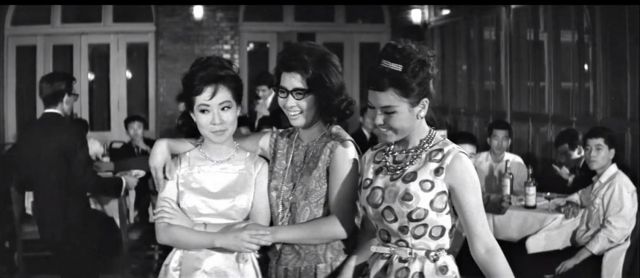[HanCinema's Film Review] "The Classroom of Youth" + Full Movie
 By Panos Kotzathanasis | Published on
By Panos Kotzathanasis | Published on
During the 60s, Koreans were unable to access Japanese popular culture, legally at least, as the local government had implemented a series of laws to achieve just that, after the liberation following the end of WWII. In reality however, there were a number of ways to get access, particularly as many travelers to the neighboring country frequently returned with the illegal material. As such, the Japanese Sun Tribe movies proved a significant influence for Korean filmmakers, resulting in a series of titles that depicted nihilistic Korean youth rebelling against the traditional social order. Kim So-yong's "The Classroom of Youth" is one of those films, as it is based in Ko Nakahira's "He and I" from 1961.
Advertisement
The story revolves around two college students in their 20s, Park Chan-sik and Do Deok-ja, who, despite being classmates, could not be more different than each other. Deok-ja comes from a conservative family, with her mother still wearing traditional Korean attire while ruling over her four daughters with an iron hand. Chan-sik on the other, is essentially a libertine, a playboy who is not shy of stating that he spends his money on prostitutes, while his mother, Gyoo-hwa, is divorced, flirts with a number of men, and owns a sic hair salon, while exhibiting a rather European style of life. The two youths, however, fall in love, although Deok-ja is both attracted and appalled by his behavior. Chan-sik also harbors a dark family secret, while the girl's father has a secret of two of his own. Furthermore, when Gyoo-hwa implies that she needs a hair model for an upcoming fashion, Deok-ja and her sister, Hyeong-ja, find themselves fighting for the "part".
Kim So-yong shoots a movie that its main purpose is obviously to entertain. Starting with the comedic elements from the beginning, as the strict mother and the daughters that make fun of her and a grandmother who always seems to curse, set the tone. The scene in the classroom, with the clash between male and female students continues in this fashion, with its crossdressing result being quite hilarious if somewhat unrealistic.
This particular scene also initiates the social commentary, with the clash between the conservatives that followed the rules of Korean tradition and the progressives, who followed the rules of the Western concept of freedom leading the way for the rest of the film. While Kim's opinion of which is better eventually leans towards the first, nevertheless, he shows that being stuck to the past also creates a number of issues, as the relationship between Deok-ja's parents eloquently demonstrates. Furthermore, the fact that women, despite the steps forward in terms of emancipation, still remained under the rule of men, with marriage essentially being the only road for them, is another aspect stressed throughout the story, even though the scratches Deok-ja's father and his friend exhibit, humorously show that women don't go down without a fight at least..
The focus on crowd-pleasing continues with a number of slapping scenes, a catfight between two sisters, a number of dancing sequences, and a distinctly melodramatic finale that cements this approach rather evidently.
At the same time, however, all these scenes highlight the quality of production, with Chun Jo-myuong's cinematography capturing the vast plethora of different settings, houses, hair salon, clubs, beaches and a number of other interior and exterior locations with a combination of realism and artfulness. This change in scenery, characters, and subsequent episodes retains interest from beginning to end, majorly assisted by the fast pace implemented by the excellent editing of Yu Jae-won.
The acting is also on a high level. Kang-Shin Sung-il as Park Chan-sik embodies the role of the sensitive playboy to perfection, while his chemistry with Um Aing-ran, who is equally great in her ambivalent resolve (and an astonishing slapper), is one of the movie's best aspects. Son Mi-hui-ja as Gyoo-hwa is convincing in the role of the modern, but also deeply regretful woman, while Bang Seong-ja plays the role of the "little sister" Hyeong-ja, with gusto.
"The Classroom of Youth" may not reach the level of some of the Sun Tribe films, but is very well-shot, entertaining, interesting in its comments, and one of those films that has aged well.
Review by Panos Kotzathanasis
___________
"The Classroom of Youth" is directed by Kim Soo-yong, and features Kang-Shin Sung-il, Um Aing-ran, Bang Seong-ja, Nam Mi-ri, Son Mi-hui-ja, Lee Sang-sa. Release date in Korea: 1963/08/23.
 Panos Kotzathanasis
Panos Kotzathanasis
Panos Kotzathanasis is a film critic and reviewer specialising in East Asian Cinema. He is the founder of Asian Film Vault, administrator of Asian Movie Pulse and also writes for Taste of Cinema, Eastern Kicks, China Policy Institute and Filmboy. You can follow him on Twitter and Facebook. Panos Kotzathanasis can be contacted via sinkazama82@gmail.com.


